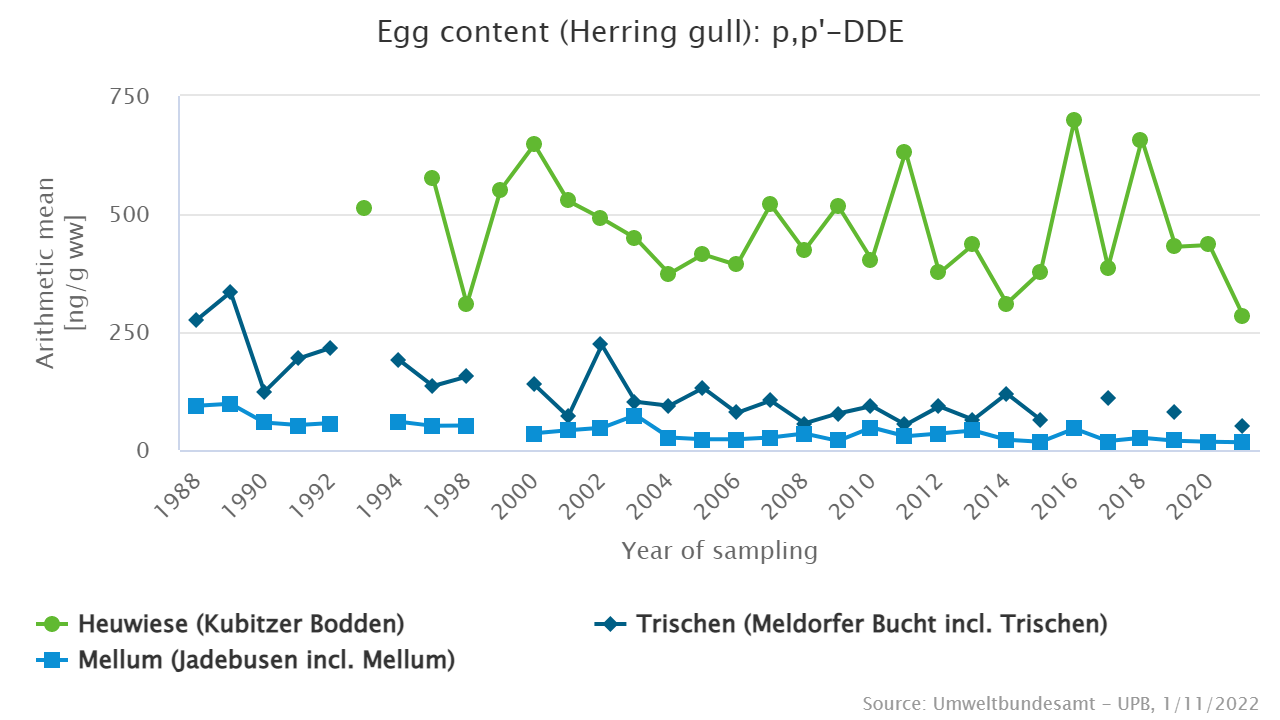Has the ban of persistent pesticides resulted in decreased environmental contamination?
The Pesticide Application Ordinance has led to a significant decline of environmental pollution by organochloro pesticides. Dieldrin is detected only in single samples and at low levels. DDT and its metabolites, however, are still present in the environment. DDT and DDE levels are considerably higher in samples from East Germany as compared to West Germany.
In the 1970s to early 1980s, many organochloro pesticides like Aldrin, Dieldrin, Heptachlor and Dichlorodiphenyltrichloroethane (DDT) were banned in the Federal Republic of Germany because of their high toxicity, persistence and potential for biomagnification. Since November 1992 the ban is regulated by the Pesticide Application Ordinance.
Contamination of environmental samples
Dieldrin which is on one hand a degradation product of aldrin but on the other hand also directly used as pesticide is detectable only in single terrestrial and freshwater samples. Its concentration in marine samples stagnates at a very low level.
Comparison between East Germany and West Germany
Contamination levels are considerably higher in samples from East Germany than in West German samples. Figure 1 shows this exemplarily for the metabolite DDE in herring gull eggs. These differences in contamination reflect previous differences in emissions in both parts of Germany. Whereas in the Federal Republic of Germany DDT was banned completely in 1972, its use in the former Democratic Republic of Germany was successively banned between 1971 and 1988.
